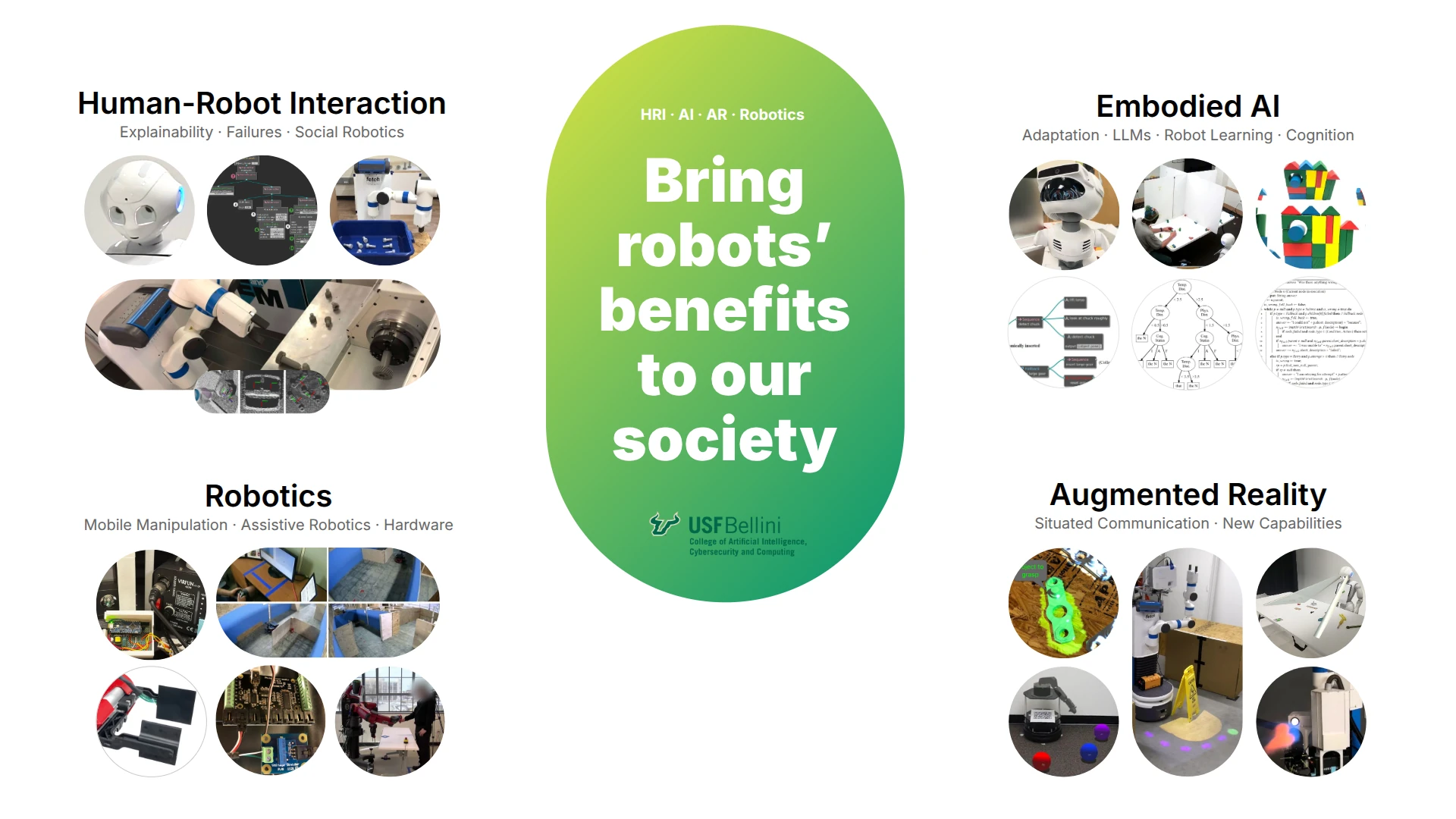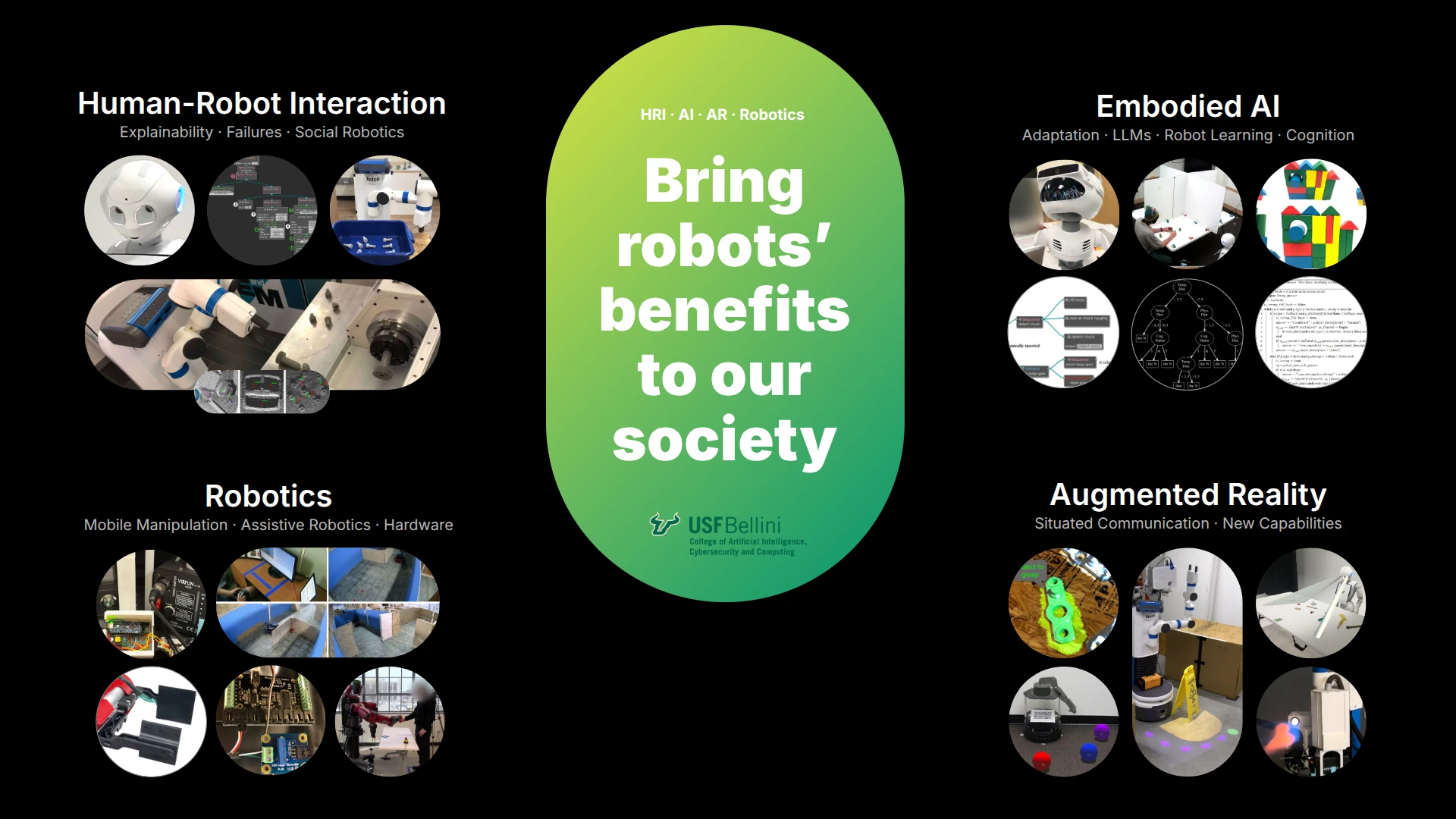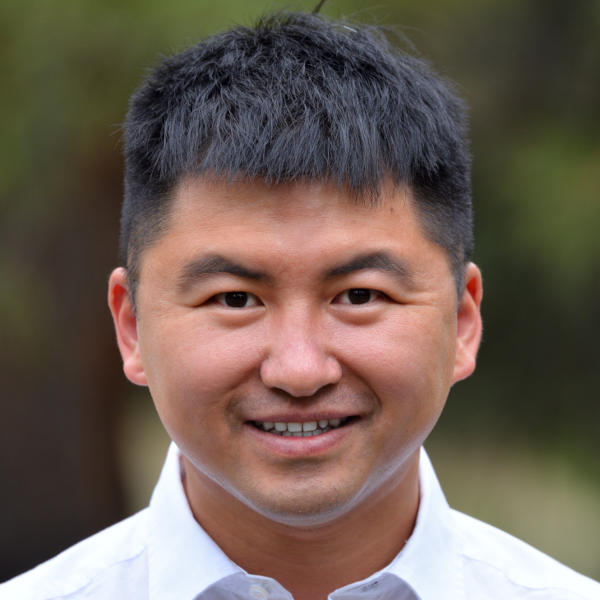The end of ¼ century marks the start of Spring, which we gather and celebrate at another lab lunch!


Reality, Autonomy, and Robot Experience (RARE) Lab
Prof. Zhao Han leads the RARE lab in the Bellini College of Artificial Intelligence, Cybersecurity and Computing at the University of South Florida.
Mission
Our mission is to solve the grand challenges in human-centered robotics by designing and studying preferred robot interactions and capable robotic systems powered by AI.
Vision
We envision an era of interactive robots that provide superior robot experiences for humans to interact, collaborate, team up, and live with.
News
Learn RARE Lab’s latest research, outreach, and members’ achievements!
Aired on TV (FOX13 Tampa Bay), we are glad to engage the public with our in-part NSF-funded research!
Watch it or read the short news article.
RARE Lab’s NSF-funded projected-AR for robotics project is being featured for half a month on the USF homepage for a week. Read it here!
Ph.D. students Jingjing Li and Yixi Chen joined the RARE Lab. Welcome!
The National Science Foundation (NSF) has awarded $411,578 to Dr. Zhao Han (PI) for “Collaborative Research: FRR: Enabling Robots with Adaptive Projector-Based AR in Dynamic Environments” with Dr. Arie Kaufman from Stony Brook University!
Congrats to RARE Lab PhD student Xiangfei Kong on being awarded the Rada Scholarship in Al and Healthcare for the 2025-2026 school year!
Research
Research focuses on interdisciplinary human-robot interaction (HRI), involving robotics, AI, augmented reality (AR), cognitive science, and psychology… See Research Overview →

















